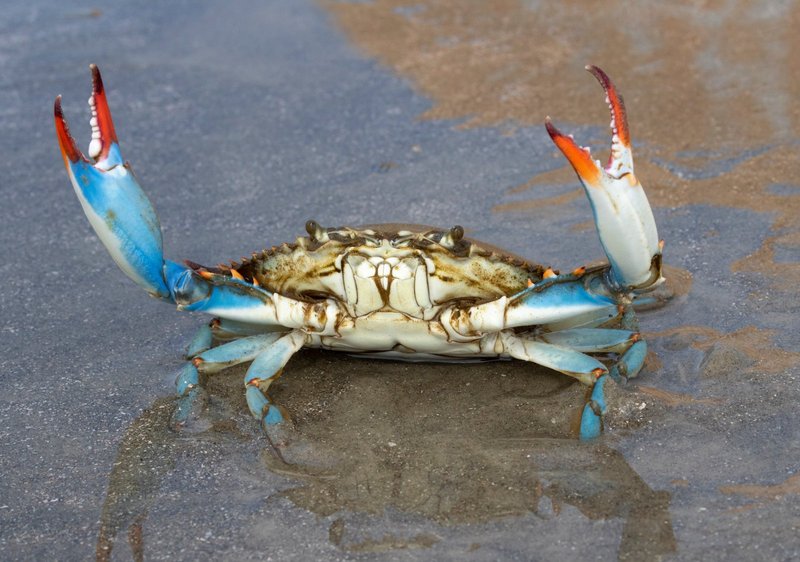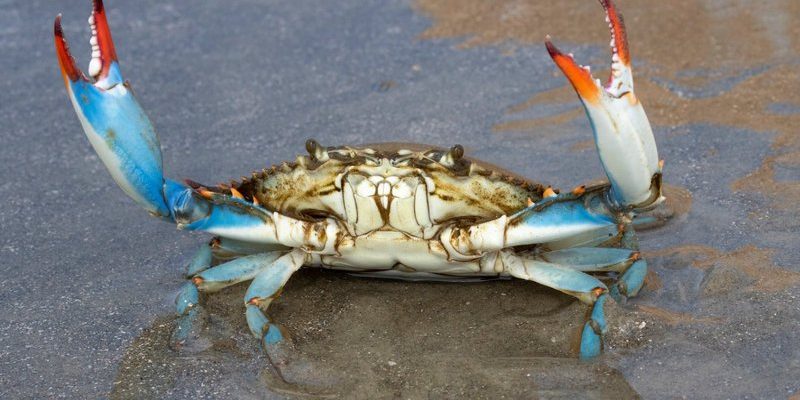
The blue crab, or *Callinectes sapidus*, is more than just a dinner plate favorite in coastal communities. It’s woven into the fabric of many cultures, from the Chesapeake Bay to the Gulf of Mexico. People have developed various stories and beliefs, sometimes steeped in superstition, that reflect their relationship with these crabs. So, grab a cup of coffee, and let’s explore the enchanting myths and cultural significance surrounding blue crabs!
The Blue Crab’s Role in Folklore
Folklore often reflects a society’s values and beliefs, and blue crabs are no exception. In many coastal communities, these crabs symbolize abundance and prosperity. You might hear old tales suggesting that if you catch a blue crab on a specific day—like a full moon—it brings good luck for the rest of the month. This belief ties back to the natural cycles of the ocean and the rhythms of life that many rely on for their livelihood.
Interestingly, in some cultures, blue crabs are seen as symbols of resilience. The crab’s ability to adapt to changing environments acts as a reminder that we can overcome challenges, too. There are stories passed down through generations where fishermen credit their successful catches to the spirit of the blue crab watching over them. It’s almost poetic, really, how these creatures inspire such deep connections.
Let’s not forget about the legends surrounding crab festivals, where communities celebrate their catch with feasts and music. These gatherings often include traditional songs and dances, paying homage to the blue crab’s place in their culture.
Culinary Significance of the Blue Crab
When it comes to food, blue crabs are at the heart of many culinary traditions. In places like Maryland, blue crab is more than a meal; it’s an experience. Many locals believe that eating a blue crab brings you closer to your roots. It’s a bonding ritual, often involving family gatherings and summertime barbecues. You might have seen those famous crab feasts where family and friends gather around tables covered in newspaper, cracking crabs and sharing stories.
The way blue crabs are cooked and prepared also varies from culture to culture. In the South, for instance, you might find them boiled with spices, while in other regions, they’re sautéed with garlic and butter. Here’s the thing: this variety in preparation reflects the personal touch each family adds to the meal, creating cherished memories around the dinner table.
Moreover, many believe that enjoying blue crab can bring good fortune, especially when shared with loved ones. This belief adds another layer to its culinary importance, emphasizing connection and togetherness.
Superstitions Surrounding Blue Crabs
Superstitions often arise from a desire to find control in the unpredictable world around us. With blue crabs, these beliefs can be quite colorful. For example, some fishermen hold the belief that if you find a blue crab with a particularly vibrant shell, it’s a sign of a good fishing season ahead. Others might say that if a crab pinches you, it’s a warning to be more careful in your endeavors.
In some coastal towns, there’s a saying about never catching blue crabs on certain days, particularly in late spring. It’s thought that doing so will anger the sea spirits. This kind of superstition emphasizes respect for nature and the creatures that inhabit it. After all, the ocean provides us with so much; it’s only fair to show gratitude.
Furthermore, there’s a saying in some cultures that eating a blue crab cooked on a Friday will lead to misfortune. These superstitions may seem odd, but they illustrate how deeply people relate to these creatures and the oceans they call home.
Cultural Celebrations and Festivals
In many coastal regions, festivals celebrating the blue crab bring communities together. These events often feature everything from crab races to cooking competitions, highlighting the crab’s importance in local culture. During these festivals, you’ll find families flocking to the shores, excited to partake in the festivities and share their love for the blue crab.
Take Maryland’s famous Crab Festival, for example. Here, you can find crabs cooked every which way—crab cakes, crab boils, and even crab soup! This kind of celebration helps keep traditions alive and allows local artisans to showcase their crafts, blending culinary and cultural artistry.
These gatherings often serve as a reminder of the community’s reliance on the sea and the bounty it provides. You might even find that local folklore and myths are shared during these celebrations, passing stories from one generation to the next as people bond over delicious food.
The Conservation Message
With all this focus on blue crabs, it’s important to recognize the need for sustainable practices. Many cultures have developed an awareness of the need to protect blue crab populations. You might hear fishermen talking about regulations, such as size limits and seasonal restrictions, aimed at ensuring that blue crabs continue to thrive.
This shift toward conservation is rooted in cultural beliefs, too. Many communities view themselves as caretakers of the ocean, understanding that their livelihoods depend on the health of marine ecosystems. When families gather to celebrate blue crabs, there’s often a shared commitment to practicing responsible fishing and ensuring future generations can enjoy these delicious creatures.
Interestingly, some coastal towns have also initiated programs to restore crab habitats, demonstrating a strong connection between culture and environmental stewardship. It’s heartening to see these ancient traditions adapting to modern-day challenges, proving that respect for nature is a timeless principle.
The blue crab is much more than a tasty seafood option—it’s a symbol of community, resilience, and tradition. From the myths and superstitions that surround them to the culinary celebrations they inspire, blue crabs play a significant role in many cultures. Whether you’re enjoying a crab feast during summer or sharing stories about the ocean, these creatures connect us to the rhythms of life and the sea.
As we cherish these traditions, it’s essential to remember the importance of sustainability and conservation. After all, the blue crab’s legacy is woven into our lives, and preserving their populations ensures that future generations can create their own memories and cultural stories. So, the next time you enjoy a blue crab, think about the rich tapestry of beliefs and practices that brought it to your table. It’s a delicious reminder of how food connects us all.

